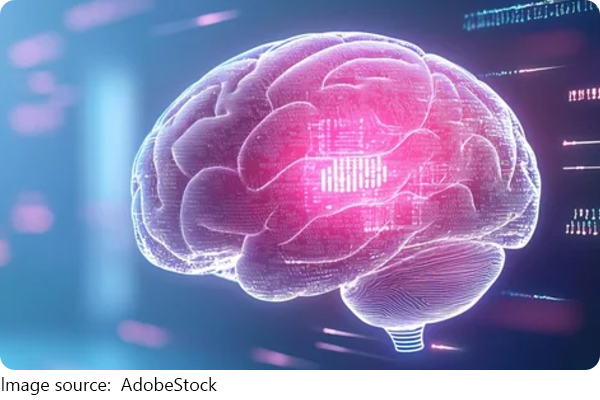How PTSD Changes Brain?

Post-Traumatic Stress Disorder (PTSD) profoundly alters brain chemistry and cellular function, reshaping neural circuits involved in emotion, cognition, and stress regulation.
Modern neuroscience reveals that PTSD is not merely a psychological condition but a complex biological disorder with identifiable molecular and cellular changes.
Molecular and Cellular Brain Changes in PTSD
Recent single-cell genetic analyses of postmortem human brains have uncovered specific gene alterations in inhibitory neurons within the dorsolateral prefrontal cortex (DLPFC) is a brain region vital for emotional regulation and executive functions. These inhibitory neurons, which typically modulate neural overactivity, show diminished communication in PTSD patients.
This deficit likely contributes to hyperexcitability in the DLPFC, driving hallmark PTSD symptoms such as hyperarousal and intrusive nightmares.
Simultaneously, microglia—the brain's immune cells exhibit unique activity patterns in PTSD, contrasting with other mood disorders like major depressive disorder (MDD). Whereas microglia are overactive in MDD, those in PTSD brains tend to under-communicate, indicating distinct inflammatory pathways.
Dr. Matthew Girgenti explains, "By identifying changes at the single-cell level, particularly in inhibitory neurons and endothelial cells, we are clarifying the biological underpinnings of PTSD. These discoveries are critical to developing precision treatments tailored to these molecular signatures."
The Role of Stress Chemicals and Amygdala Dysregulation
Trauma triggers a cascade of stress hormones such as cortisol and neurotransmitters including glutamate and norepinephrine that remodel neural pathways. The amygdala, the brain's central fear-processing nucleus, often becomes hyperactive and sensitized after trauma exposure, heightening fear responses and anxiety.
This hyperactivity alters connectivity with other regions, including the hippocampus and prefrontal cortex, compounding emotional dysregulation and impaired memory processes.
Brian Baldo, a neuropharmacology expert, states, "Understanding how stress chemicals reshape key brain nuclei such as the amygdala is essential. It provides insight into why PTSD symptoms persist and highlights new pharmacological targets to interrupt these maladaptive brain changes."
Neurochemical Imbalances Impacting Cognitive and Emotional Function
PTSD-related neurochemical disruptions extend to neurotransmitter systems involved in mood and cognition. For instance, dysregulated serotonin and dopamine signaling may underlie comorbid depressive symptoms and cognitive deficits, such as impaired attention and working memory.

Toward Targeted Treatments: Implications of Brain Chemistry Changes
The newfound understanding of PTSD's neurobiological basis underscores the need for novel therapeutics targeting specific cellular pathways. Current antidepressants show limited efficacy as they do not specifically address PTSD's unique inhibitory neuron and microglial alterations.
Precision medicine efforts focus on modulating excitatory-inhibitory balance, restoring endothelial cell function, and normalizing amygdala activity through pharmacological and neuromodulation techniques.
"Incorporating molecular insights into clinical practice will revolutionize PTSD care," Dr. Girgenti asserts. "By targeting the exact cellular disruptions underlying symptoms, treatments can be both more effective and personalized."
PTSD induces profound changes in brain chemistry, including inhibitory neuron dysfunction, microglial communication deficits, and endothelial cell dysregulation, particularly within prefrontal and limbic regions. Stress-induced rewiring of the amygdala circuitry and neurotransmitter imbalances further compound emotional and cognitive impairments.
These discoveries illuminate the biological complexity behind PTSD symptoms and provide promising avenues for innovative, targeted therapies.
-
 Dolls Spark CreativityYou Won’t Believe How Much Creativity a Simple Doll Can Spark in Your Child!
Dolls Spark CreativityYou Won’t Believe How Much Creativity a Simple Doll Can Spark in Your Child! -
 Light Shapes MindsThe Psychology of Space and Light—How Design Elements Quietly Influence Mood, Focus, and Human Behavior!
Light Shapes MindsThe Psychology of Space and Light—How Design Elements Quietly Influence Mood, Focus, and Human Behavior! -
 Explore Willemstad's Top 6Six thrilling, budget-friendly adventures in Curaçao's colorful capital—snorkel, caves, and savor island vibes with insider tips!
Explore Willemstad's Top 6Six thrilling, budget-friendly adventures in Curaçao's colorful capital—snorkel, caves, and savor island vibes with insider tips!